View from the Bottom of the Historic District
Introduction
Text-to-speech Audio
Standing on the corner of 25th and H Streets prior to the 1950s, you would have seen a very different view. It would be dominated by the Washington Gas Light Company's gas works, including its huge round gas holding tanks and smoke-emitting coal gasification plant. Other nearby industries included the Christian Heurich and Drury-Abner breweries, cement plants, and lime kilns. Industry closed down in the 1950s, making the neighborhood a more desirable place to live. Soon the Watergate and other modern apartments and the John F. Kennedy Center for the Performing Arts replaced the old industries.
Images
Watergate roof-top view of 25th and H Streets
.jpg)
Washington Gasworks and holding tanks on Virginia Ave., with Washington Monument in the distance
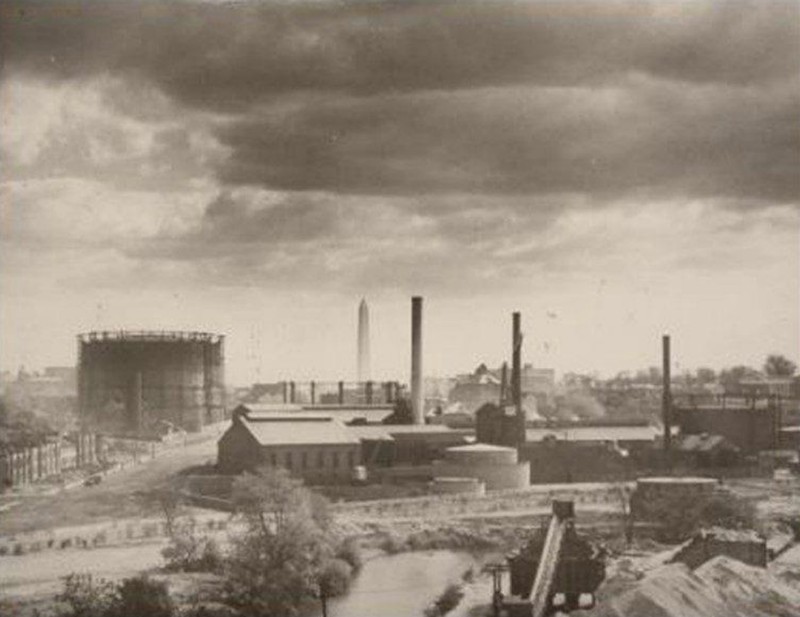
Washington Gas holding tanks, 1917
.jpg)
1909 map showing round gas tanks and industries
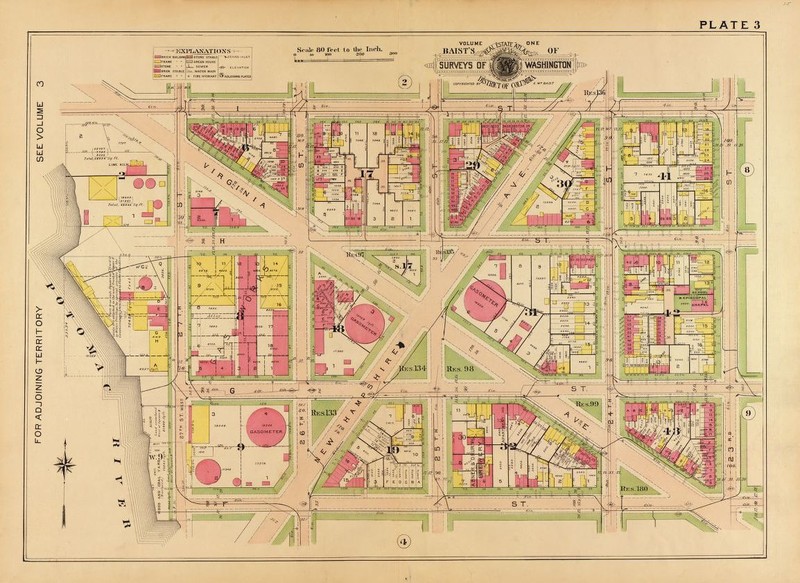
Foggy Bottom resident Artist Frank Nobel's "Ms. Green's House, 1938" (26th St. & Virginia Ave.)
.jpg)
Heurich Brewery, 1930
.jpg)
The Watergate Inn, Pennsylvania Dutch Restaurant, closed in 1966
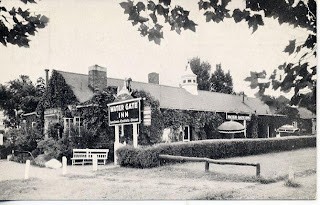
Aerial view of Howard Johnsons, Watergate, and the Kennedy Center, mid-1960s
.jpg)
Juarez Circle with the Mexican President and the Watergate
.jpg)
Call Box at New Hampshire Ave., in parklet across from the FB Octagon House
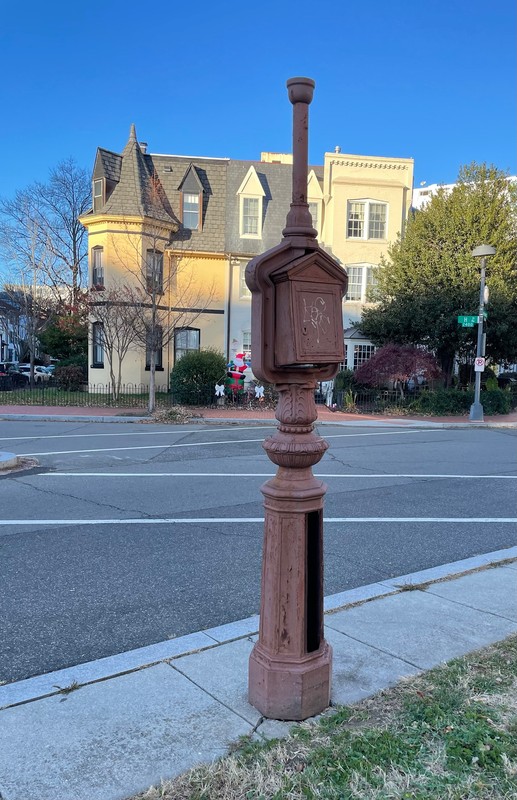
Rainbow over Virginia Avenue, which runs south-east to the Washington Monument
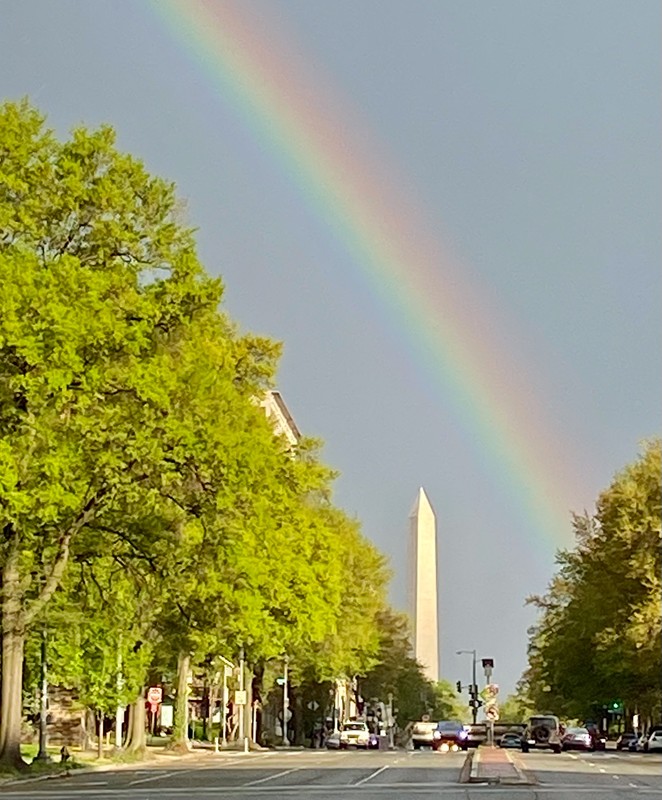
Backstory and Context
Text-to-speech Audio
The view from this corner from the 1850s to the 1950s was dominated by the Washington Gas Light Company's gas works. Built in the 1850s, its facilities dominated the skyline (and the smell) of the southern part of Foggy Bottom. The Heurich Brewery was another massive facility that operated from 1895-1956. The Abner-Drury Brewery at 25th and F Street also operated from 1898 to 1938. Other industries included cement plants and lime kilns. But the area also hosted The Watergate Inn, a popular Pennsylvania Dutch restaurant known for its pop-overs. Nearby was Pete's Irish bar, and its frequently visiting goat that lived at a nearby riding stable. And after the Heurich Brewery closed, the Arena Stage theater presented shows at its hospitality reception room until their new theater opened in southwest D.C. The current Arena Stage recalls this heritage through its "Old Vat Room" theater.
After the gasworks closed down in the 1940s, the first project to go up was the Potomac Plaza Co-op in 1957 (2475 Virginia Ave.). The redevelopment project was originally planned to reach the Potomac River and rival New York's Rockefeller Center, including a skating rink and a yacht basin. That plan did not work out, so the developers sold the southern part of the property to the builders of the Watergate Complex. The Watergate residences, offices, and hotel opened in phases from 1965-1971. Famous Watergate residents included Ruth Bader Ginsburg, Robert Dole, and Placido Domingo.
Beyond the Watergate Complex is the John F. Kennedy Center for the Performing Arts, completed in 1971, on the site of the Heurich Brewery. The statue of Mexican President Benito Juarez gives its name to the traffic circle. It was installed in 1969 and was a gift from Mexico, in return for U.S. gift of a statute of President Abraham Lincoln. Behind President Juarez is the Saudi Arabian Embassy, which was originally constructed for the Peoples Life Insurance Company in 1959.
Cite This Entry
FBA History Project, . "View from the Bottom of the Historic District." Clio: Your Guide to History. December 4, 2022. Accessed April 3, 2025. https://theclio.com/entry/142873
Sources
Foggy Bottom Association newsletter, July 2004
Viorst, Milton "Foggy Bottom: From Gas Tanks to Dignity," Washington Post, Nov. 28, 1958
Hershman, Robert R., and Edward T. Stafford, Growing with Washington, The Story of Our First Hundred Years, Washington Gas Light Co., 1948
Sherwood, Suzanne Berry, “Foggy Bottom 1800-1975: A Study in the Uses of an Urban Neighborhood,” GW Washington Studies, No. 7, Center for Washington Area Studies, The George Washington University, 1974
Kayser, Elmer Louis, Bricks without Straw: The Evolution of George Washington University, 1970, p. 217
Joseph Rodota, The Architecture of Washington DC's Watergate Complex: Inside America’s Most Infamous Address, Arch Daily, (Mar. 1, 2018) (see link below)
Foggy Bottom News, Oct. 1966
George Washington University Gelman Library, Special Collections
DC Public Library
Library of Congress, Baist Map 1909, Vol. 1, Plate 2
Foggy Bottom News, June 1966
Washington Post, 2006
Food Company Cookbooks, https://foodcompanycookbooks.blogspot.com/2008/01/water-gate-inn.html
GWU Gelman Library, Special Collections
Leone/Vogt 2021
Vogt/Leone, 2021
Leone/Vogt 2021

